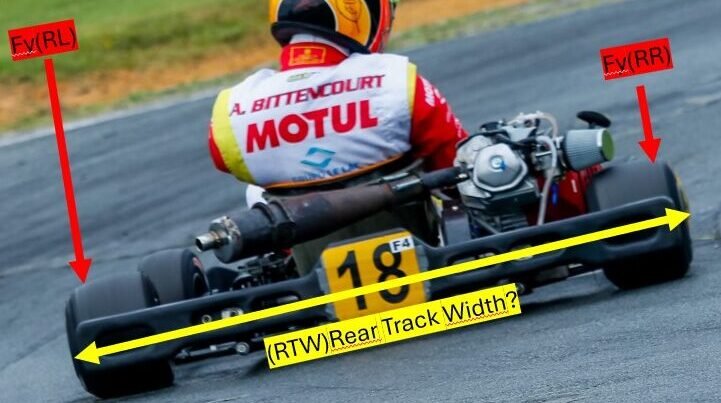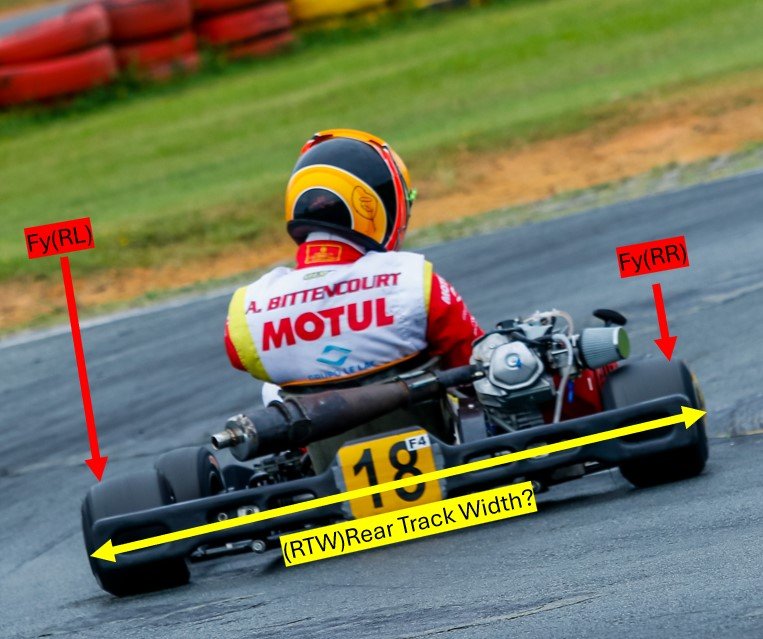Secrets of Kart Rear Track Width: A Comprehensive Guide
Table of Contents
- Introduction
- Understanding Kart Rear Track Width
- The Impact of Rear Track Width on Kart Performance
- Optimizing Kart Rear Track Width for Different Tracks and Conditions
- Advanced Techniques and Strategies
- Common Mistakes and Misconceptions
Introduction
Welcome to the world of kart racing tech , a dynamic and thrilling sport that combines speed, skill, and strategic mechanical tuning to achieve victory on the track. Among the various aspects that go into perfecting a kart’s performance, one that stands out in its ability to make or break a race is the kart rear track width. This comprehensive guide is designed to unravel the secrets of rear track width, helping racers understand its critical role and how to master its adjustment for optimal performance.
Kart racing, at its core, is not just about the driver’s ability to navigate the track; it’s equally about how well the kart responds to the driver’s commands. The rear track width, or the distance between the wheels on the rear axle, is a fundamental setup parameter that affects handling, speed, and the overall balance of the kart. By delving into this guide, you will learn not only the basics but also advanced strategies for fine-tuning this aspect of your kart, ensuring you have the edge over your competitors.
Understanding Kart Rear Track Width
The Basics of Kart Rear Track Width
At the heart of kart performance lies a critical but often overlooked element: kart rear track width. This dimension is more than just a measurement; it’s a pivotal factor that influences how a kart behaves on the track. In simple terms, rear track width refers to the distance between the centers of the rear tires. It plays a significant role in the kart’s stability, grip, and cornering ability, affecting everything from how the kart enters a turn to how it accelerates out of one.
Adjusting the rear track width is akin to fine-tuning the kart’s balance between agility and stability. Basically, increasing or decreasing the distance between the rear tires changes the dynamics of the kart, the centrifugal forces and the loads on the tires itself. The wider you go, it causes oversteer, the rear axle will flex more due to the width of the wheels. Narrower will be the opposite, but the amount of grip could be more than you need, especially on high rubbery tracks, it can cause a “jumpy effect”, and understeer. Rear narrower setups is commonly used on wet track conditions.
Measuring and Adjusting Rear Track Width
Measuring Rear Track Width: To accurately adjust the kart’s rear track width, one must first know how to measure it properly. This process involves:
-
- Using a reliable measuring tape or a dedicated kart measurement tool.
-
- Measuring the distance from the outer edge of one rear wheel to the outer edge of the opposite rear wheel.
Adjusting Rear Track Width: Adjusting the rear track width involves either spreading the rear wheels further apart or bringing them closer together. This is achieved by:
-
- Losing the hubs and moving to the desired setup.
-
- Ensuring adjustments are made evenly on both sides to maintain symmetry.
Tools Required:
-
- Wrench set
-
- Measuring tape or kart setup tools
By carefully adjusting the rear track width, racers can fine-tune their kart’s performance to match their driving style and the demands of the track. The key is to experiment and understand how each adjustment affects the kart’s behavior in different conditions.
The Impact of Rear Track Width on Kart Performance
Handling
The handling of a kart are directly influenced by its rear track width. A wider track width increases the kart’s footprint on the track, which in turn enhances stability, especially at higher speeds or during aggressive cornering. This setup is particularly beneficial on tracks with long, sweeping turns where maintaining speed and stability is crucial. However, this increased stability comes with a slight trade-off in agility, making the kart less nimble during tight, technical sections of the track.
Conversely, a narrower rear track width makes the kart more responsive to steering inputs, providing an agility boost that is advantageous in twisty track layouts. Temperature, other setups (like Front width), and track conditions, will make a huge effect on the rear track width setup. The desired to be fast, is a neutral to oversteer setup, but it depends on the driver style too.
Key Points:
-
- Wider rear track = Less Grip, Oversteer.
-
- Narrower rear track = More Grip, understeer.

Speed and Acceleration
The rear track width also has a subtle yet significant impact on a kart’s speed and acceleration characteristics. A wider setup, while offering more stability, can also decrease the rolling resistance of the kart. This means less of the engine’s power is used to overcome friction, potentially leading to increase acceleration and top speed.
In contrast, a narrower setup increases the rigidity of the rear axle loads of the contact patch of the tires with the track, it can causes excess of grip, making the engine in need of power to overcome friction.
Considerations:
-
- Adjust rear track width according to track layout and desired balance between speed and grip.
-
- Experiment with different widths during practice sessions to find the optimal setup for each track conditions.
Tire Wear and Maintenance
One of the practical considerations of adjusting the rear track width is its effect on tire wear. A narrow track width can lead to more even tire wear over time.
On the other hand, a wider setup might concentrate wear on the inside or outside edges of the tires, depending on driving style and track conditions. This uneven wear can affect performance and may require more frequent tire changes or adjustments to maintain optimal grip levels.
Tips for Managing Tire Wear:
-
- Regularly inspect tires for wear patterns and adjust rear track width as necessary.
-
- Consider tire wear in your overall kart setup strategy, balancing performance with maintenance costs and longevity.
Optimizing Kart Rear Track Width for Different Tracks and Conditions
The art of kart setup is a dynamic process, requiring adjustments based on track characteristics and environmental conditions. Mastering rear track width settings for varying scenarios can provide a competitive edge, enhancing performance where it counts.
Adapting to Track Layout
Tight vs. High-Speed Tracks:
-
- Tight, Technical Tracks: For circuits with many tight turns and short straights, a narrower rear track width enhances agility, allowing for quicker direction changes and improved handling in complex sections. This setup helps drivers navigate through chicanes and hairpins with greater ease, offering a nimble response to steering inputs.
-
- High-Speed, Sweeping Tracks: Tracks with long straights and sweeping turns benefit from a wider rear track width. This configuration improves high-speed stability and cornering grip, essential for maintaining speed through fast corners. The lateral support provided by a wider stance helps the kart to sliding in these conditions, ensuring that speed is carried through the entirety of the turn.
Track Surface Considerations: The surface of the track, whether it’s smooth asphalt or a more abrasive tarmac, can also influence the optimal rear track width. A smoother surface may allow for a narrower setup, while a rougher surface might necessitate a wider stance.
Weather and Track Condition Considerations
Wet vs. Dry Conditions:
-
- Dry Conditions: In dry conditions, the choice of rear track width is primarily influenced by the track layout and surface type. The key is finding a balance that offers both agility and stability, optimizing for the specific challenges of the track.
-
- Wet Conditions: Rain introduces a new layer of complexity to track width adjustments. A narrower rear track width is generally favored in wet conditions to increase the kart’s grip and improve water dispersal from the tires. This setup helps maintain grip on slippery surfaces, reducing the likelihood of aquaplaning and enhancing driver confidence in challenging conditions.
Temperature Impacts: Temperature fluctuations can affect both the track surface and tire behavior, influencing the ideal rear track width. Always check the temperature and pressure variation between sessions and different setups.
Advanced Techniques and Strategies
Data-Driven Adjustments
The use of telemetry and data acquisition systems in karting has transformed the approach to setup adjustments, including rear track width. By analyzing data such as lap times, cornering speeds, and tire temperatures, drivers and teams can make informed decisions on the optimal track width for their kart.
Combining Track Width with Other Setup Adjustments
Rear track width should not be adjusted in isolation. Its effects are interconnected with other setup parameters such as tire pressure, front track width, and chassis stiffness.
Integration Tips:
-
- Always consider how changes to rear track width interact with other setup adjustments.
-
- Use a holistic approach to kart setup, testing different combinations to find the ideal balance for each situation.
-
- Common Mistakes and Misconceptions
-
- In the pursuit of the perfect kart setup, it’s easy to fall into common traps or hold onto misconceptions that can hinder performance. Understanding these pitfalls is crucial for any racer aiming to fully harness the potential of their kart’s rear track width.
-
- Ignoring Track and Weather Conditions: One common oversight is sticking to a “one-size-fits-all” setup, regardless of the track layout or weather conditions. This approach can lead to suboptimal performance, as the rear track width that works wonders on a dry, tight circuit might prove less effective on a wet or high-speed track. Adjustments should be responsive to the environment, with a flexible mindset towards setup changes.
-
- Overemphasis on Width over Balance: While the focus of this guide is on rear track width, it’s important to remember that kart performance is the result of a balanced setup. Overemphasizing the importance of track width while neglecting other aspects like tire pressure, weight distribution, and alignment can lead to a misbalanced kart. Always consider how changes in track width interact with the rest of your setup.
-
- Neglecting Tire Wear Patterns: Another mistake is ignoring the information tire wear patterns provide. Uneven wear can be a telltale sign of an improperly adjusted track width. For instance, excessive wear on the outer edges might indicate a too narrow rear track, while wear on the inner edges could suggest the opposite. Regularly inspecting and interpreting tire wear can guide more informed adjustments.
-
- Over-adjusting: In the quest for the perfect setting, there’s a risk of making overly drastic adjustments. Subtle changes are often more effective, allowing you to fine-tune the kart’s behavior without overshooting the mark. It’s better to adjust incrementally, testing and analyzing the impact of each minor tweak.
Learning from the Pros
Drawing insights from experienced racers and mechanics can accelerate the learning curve, offering valuable shortcuts to effective kart setup strategies. Here are some lessons gleaned from professionals in the field:
-
- The Importance of Experimentation: Top racers emphasize the role of continuous testing and experimentation. What works for one driver or kart might not work for another, so personal experience is invaluable. Seasoned racers often spend countless hours on the track, testing different setups under various conditions to understand their effects intimately.
-
- Adapting to the Kart’s Feedback: Professional mechanics often speak of “listening to the kart.” This means paying attention to how the kart responds to adjustments, using performance feedback to guide further changes. For example, if a wider rear track width improves cornering stability but compromises agility, a slight narrowing adjustment might strike the perfect balance.
-
- Case Study: Consider the story of a championship-winning kart racer who attributed a significant part of their success to meticulous setup adjustments, particularly rear track width. By fine-tuning the width for each track, accounting for weather and temperature changes, the racer consistently achieved optimal grip and handling. This attention to detail provided the edge needed to outperform competitors, showcasing the critical role of rear track width adjustments in achieving racing excellence.
Conclusion
-
- Mastering the secrets of kart rear track width is a journey of learning, experimentation, and adaptation. By understanding the basics, recognizing the impact of track width on performance, and optimizing settings for different conditions, racers can unlock new levels of speed and handling. Remember, the key to success lies not only in knowledge but also in the willingness to experiment and learn from each experience on the track.




